






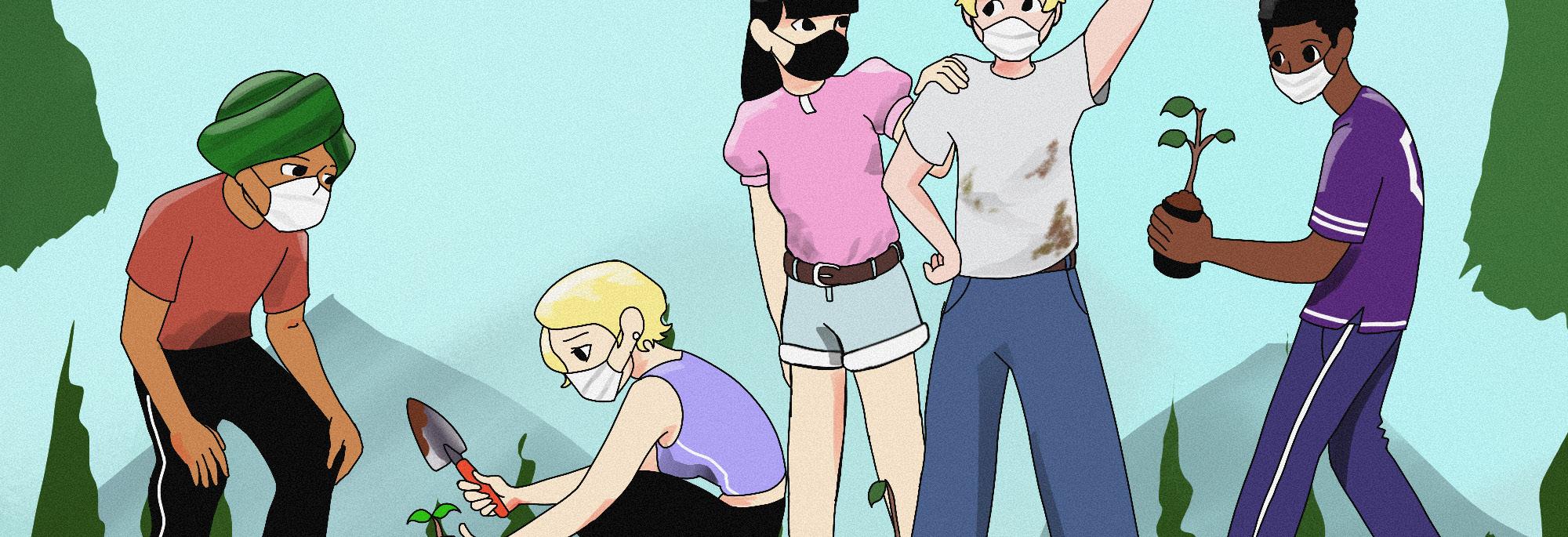

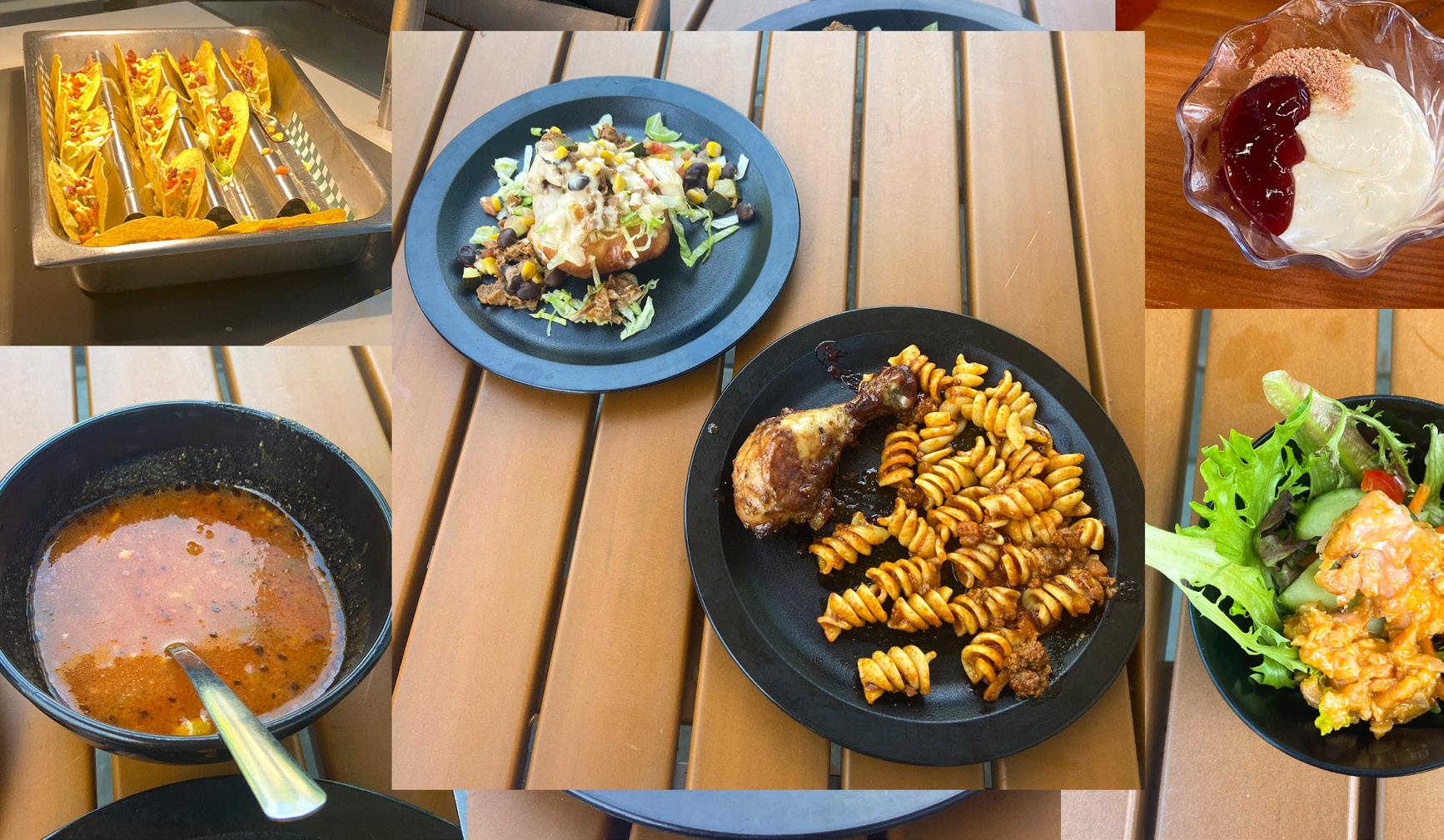
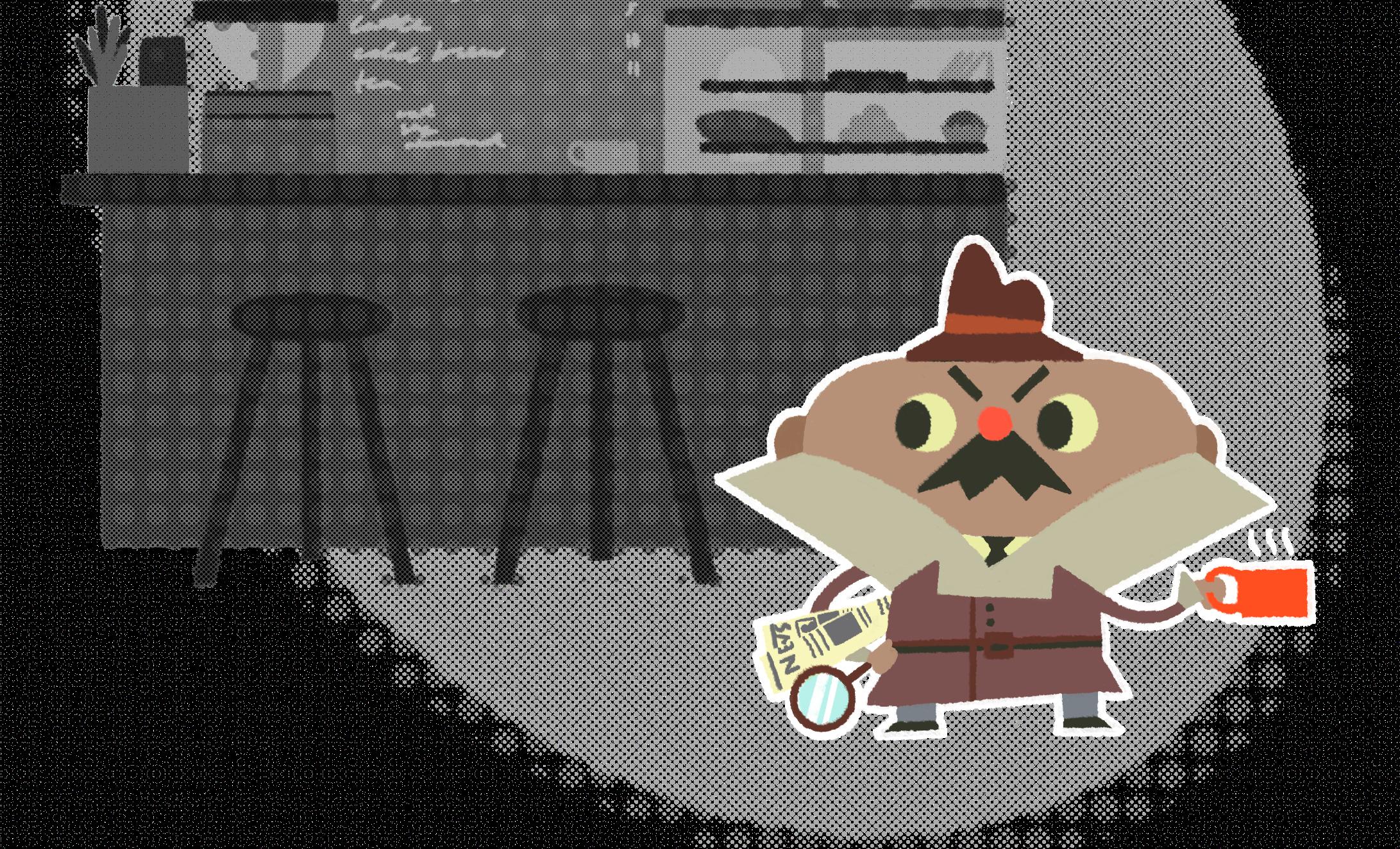
EDITOR-IN-CHIEF
Petra Chase eic@the-peak.ca
COPY EDITOR
Michelle Young copy@the-peak.ca
FACT CHECKER
Karly Burns factchecker@the-peak.ca
NEWS EDITOR Karissa Ketter news@the-peak.ca
NEWS WRITER
Hannah Fraser
OPINIONS EDITOR
Olivia Visser opinions@the-peak.ca
FEATURES EDITOR
Daniel Salcedo Rubio features@the-peak.ca
ARTS & CULTURE EDITOR
Izzy Cheung arts@the-peak.ca
HUMOUR EDITOR C Icart humour@the-peak.ca
STAFF WRITERS
Kaja Antic, Hailey Miller, and Yasmin Hassan
BUSINESS MANAGER
Yuri Zhou business@the-peak.ca (778) 782-3598
The Peak MBC2900 8888 university Dr. Burnaby, BC V5A 1S6 (778) 782-5110
PROMOTIONS MANAGER
Juliana Manalo promotions@the-peak.ca
PRODUCTION & DESIGN EDITOR
Abbey Perley production@the-peak.ca
ASSISTANT PRODUCTION EDITORS
Minh Duc Ngo and Josh Ralla
PHOTO EDITOR
Gudrun Wai-Gunnarsson photos@the-peak.ca
WEB MANAGER
Subaig Bindra web@the-peak.ca
MULTIMEDIA EDITOR
Emma Ciprian
ASSISTANT MULTIMEDIA EDITOR
Quinn Masselink
BOARD OF DIRECTORS
Emma Jean, Payal Raj, Olivia Visser, and Yuri Zhou
CONTRIBUTORS
Victoria Xi
PEAK ASSOCIATES
Cliff Ebora, Aria Amirmoini, Amrit Kamaal, and Aliya Nourlan
COVER ARTWORK
Sonya Janeshewski


Follow us on Instagram, at @thepeakatsfu and check out our YouTube channel, The Peak (SFU).
READ THE PEAK
Find extended and cited articles at the-peak.ca Download digital issues at issuu.com/peaksfu
The Peak is the official weekly student newspaper of SFU and is published every Monday. We’re funded by a student levy and governed by a Board of Directors. Any SFU student can apply to become a writer or editor.
We reserve the right to edit submissions for length, as well as style, grammar, and legality. We also reserve the right to reprint submissions at any time, both in print and on web. We will not publish content that is sexist, racist, or otherwise prejudiced.
We acknowledge that The Peak’s office is located and our paper is produced, distributed, and read on the Unceded Coast Salish Territories of the xwməθkwəy̓əm (Musqueam), səlilwətaɬ (TsleilWaututh), Kwikwitlem (Coquitlam), Kwantlen, Katzie, Semiahmoo, and Skwxwú7mesh (Squamish) Peoples. Unceded means that this land was never surrendered, relinquished, or handed over in any way. We recognize that the unceded land that we occupy includes not only the SFU Burnaby campus, but extends to the land occupied by the Vancouver and Surrey campuses as well.
SFSS and surrounding arts community expressed their dismay

SFU’s recent ongoing layoffs have impacted “nearly 100 employees, including instructors, administrative support staff, and custodial workers across all three campuses,” according to Simon Fraser Student Society (SFSS). Following the layoffs, the Woodward’s Cultural Programs were cut after 15 years of running. The program’s website was taken down on June 19.
Since 2010, the programs had been “involved with over 200 events each year, focusing on contemporary arts, dance, theatre, cinema, and music.” They were once described as “a catalyst for the creation of new work,” where the Woodward’s team would commission and facilitate the creation of local workshops, conversations, presentations, screenings, concerts, shows, and more. The program also worked to connect SFU students from the School of Contemporary Arts to local creatives and artists.
“The opening of the venues and facilities at the SFU downtown campus, specifically the Fei and Milton Wong Experimental Theatre and The Djavad Mowafaghian Cinema and World Art Centre offered such great engagement opportunities,” said Jim Smith, in an interview with The Peak. Smith is a co-founder and artistic and executive director for DanceHouse, who used the Woodward’s locations to co-present shows.
“The university had positioned these venues to bring the School of Contemporary Arts down off Burnaby Mountain to allow for the integration of the program into the local professional arts scene, literally and figuratively,” continued Smith. He noted these venues added important venue capacity in Vancouver, especially as the city’s venue space has been steadily shrinking.
Smith told Stir he found the end of Woodward’s programming “infuriating” and “it’s hard to see it washed away in a single stroke.”
“It’s really unfortunate, when you think about the work and investment of Michael [Boucher]’s personal effort, and all the people and resources that SFU put into building the community presence in that campus,” he continued. Boucher was the director of Cultural Programs and Partnerships at SFU Woodward’s.
SFU has a responsibility to its community not only as an educational institution but also as a cultural and economic center in BC.
SIMON FRASER STUDENT SOCIETY
Boucher told The Georgia Straight, he was proud of the cultural engagment that came from the progam. “We thank all of our longstanding collaborators who contributed enormously and also hats off to my great team.”
The Woodward’s Cultural Programs was not the only community space SFU has closed this year. The English Language Culture Program, Interpretation & Translation
Program, and the Climbing Wall were also closed this year.
SFU cited financial hardships for its recent cutbacks, “estimating an annual deficit totalling $20.9 million for the 2023–24 fiscal year, with that number rising to an estimated $49.9 million during the 2024–25 fiscal year.”
The SFSS stated employee “layoffs are not just numbers on a balance sheet; they represent a significant erosion of the support structures that enhance our learning environment.
“SFU has a responsibility to its community not only as an educational institution but also as a cultural and economic center in BC.” However, the statement continued, “Cutting positions and programs [ . . . ] significantly diminishes SFU’s ability to fulfill this role.”
SFU noted in a statement to The Peak, “Many SFU departments, programs, and individuals have strong collaborations with the arts and culture sector.” While the program has ended, the “performance spaces remain available for use by arts organizations.”
SFU also noted the discontinuation of funding for the program “enables us to refocus and strengthen support with arts organizations in the city through use of our venues and continued partnership with other parts of the organization, such as the Vancity Office of Community Engagement, School for Contemporary Arts, SFU Galleries or individual faculty members and scholars.”
This is an ongoing story The Peak will continue to cover.
Graduates, students, and faculty expressed their solidarity with Palestine
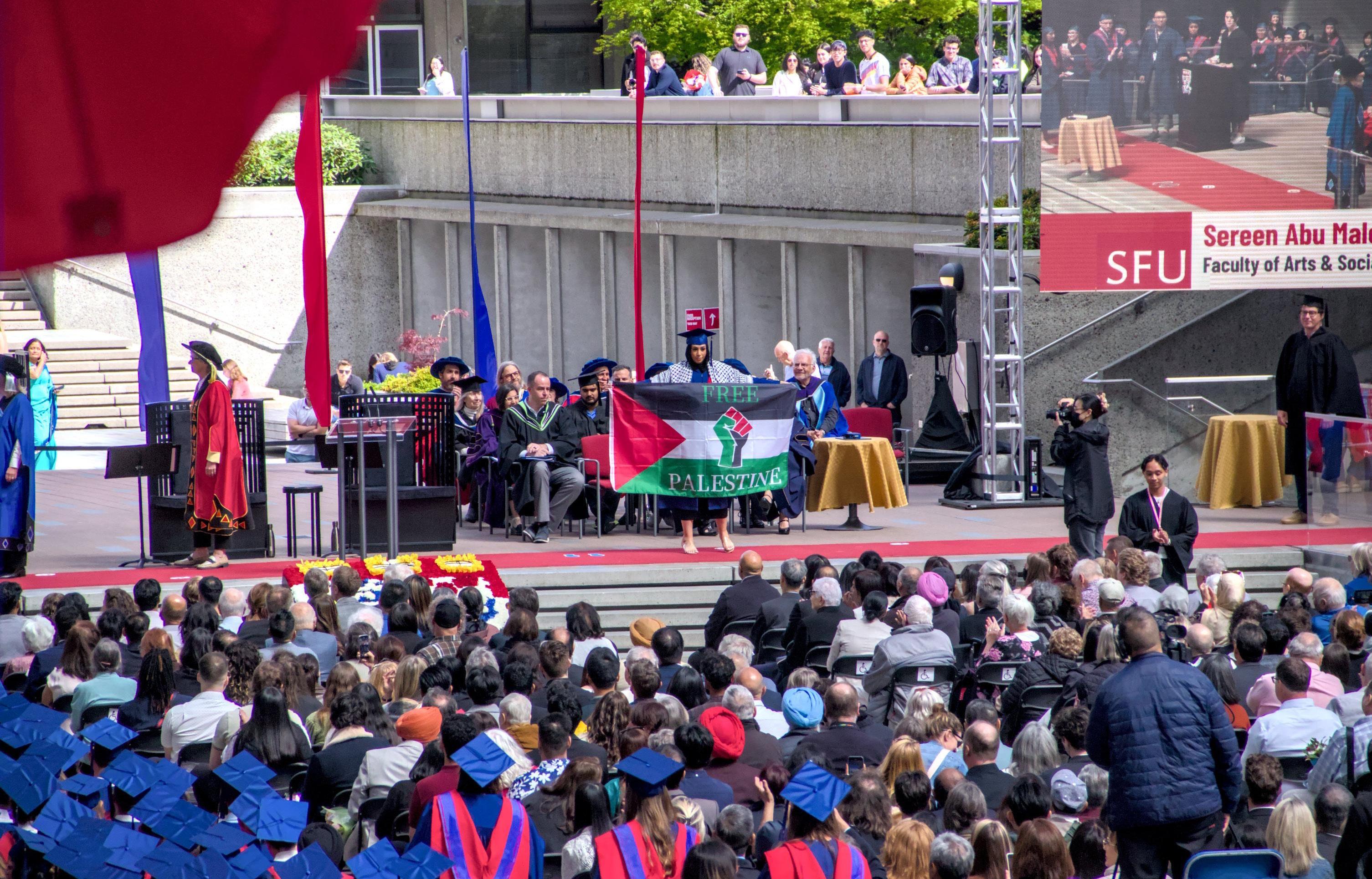
Content warning: mentions of genocide.
During the week of summer convocation at SFU, some graduates wore Palestinian keffiyehs, held up signs and Palestine flags while crossing the stage, and refused to shake hands with president Joy Johnson. The convocation took place June 11–14. At the morning celebration on June 11, SFU students dropped a banner from a window of the AQ during president Johnson’s speech and held banners on the steps of Convocation Mall in live camera view. On June 12, another banner was dropped from the balconies overlooking Convocation Mall. All of these acts protested SFU’s continued investment in companies that fund Israel’s genocide against Palestinians.
These protests came two weeks after SFU’s Board of Governors agreed to start discussing divestment from these companies and a week after the SFU Faculty Association passed two BDS motions urging SFU to divest. The BDS movement — Boycott, Divestment, Sanctions — began in 2005 as “a Palestinian-led movement for freedom, justice and equality,” according to the BDS website. This is the first time SFU has officially acknowledged students’ and faculty’s calls to divest.
The companies SFU invests in include BAE systems, Booz Allen Hamilton, and CAE Inc., which “have collectively facilitated the killing, maiming, or displacement of millions of individuals,” according to a statement from SFU Faculty for Palestine.
The Peak interviewed SFU Students For Justice in Palestine (SJP). SFU SJP is a student group in support of Palestinian liberation and freedom, who say SFU’s “agreement to discuss divestment is not an action to divest.
“These actions were in solidarity with the students, faculty, staff, and university administration in Gaza who were not able to have a 2024 convocation ceremony as all universities in Gaza have been bombed and destroyed by Israel,” said SJP. A May 29 open letter by Palestinian academics called upon “friends and colleagues around the world to resist the ongoing campaign of scholasticide in occupied Palestine.” The United Nations classifies scholasticide as “systemic obliteration of education through the arrest, detention or killing of teachers, students and staff, and the destruction of educational infrastructure.”
We, students, refuse to be used as talking points and to receive praise for our advocacy work when the university puts us in positions of marginalization and stifles movements on campus through various tactics including stalling, fear, and manipulation.
SFU STUDENTS FOR JUSTICE IN PALESTINE
The Peak also interviewed Clint Burnham, a member of the SFU Faculty for Palestine and English literature professor. Faculty for Palestine is a “network of faculty who support the cause of Palestinian liberation” at SFU. Burnham said he was at convocation on June 11 and 13, and that he and three other faculty from the English department were wearing keffiyehs in support of Palestine.
On June 12, the banner dropped by students during Joy Johnson’s speech read “SFU Students for Palestine / Divest /
Free Gaza.” Johnson’s speech praised students’ “incredible advocacy work,” though SJP deemed her speech “hypocritical.”
“SFU has still not met the demands of students and workers to divest from genocide, agreed to a first contract for research assistants, and directly in-house our cleaning and food service staff,” said SJP. “We, students, refuse to be used as talking points and to receive praise for our advocacy work when the university puts us in positions of marginalization and stifles movements on campus through various tactics including stalling, fear, and manipulation.”
In a statement to The Peak, SFU stated, “SFU respects the right to peaceful protest, and in consideration of protest action at convocation ceremonies across Canada and the US, the university ensured that safety for all was considered in convocation preparations.”
SJP claimed there was an “unprecedented amount of security during ceremonies” including a “a room in the library for people who felt ‘uncomfortable’” and “bag checks.” SJP also said, “The university widely circulated a document outlining [a] de-escalation strategy in the event of protests at convocation that singled out pro-Palestinian actions.”
To this, SFU said there was a “welcoming centre for guests to enjoy quiet time and light refreshments” at convocation and they “introduced a bag check and bag concierge service,” but that “there was no significant increase in security presence compared to previous years.” Professor Burnham said he did not notice a large increase in security at convocation.
For more information on SFU SJP’s campaign, visit their Instagram @sfu.sjp. For more information on SFU Faculty for Palestine, visit their website at sfufacultyforpalestine.ca/.
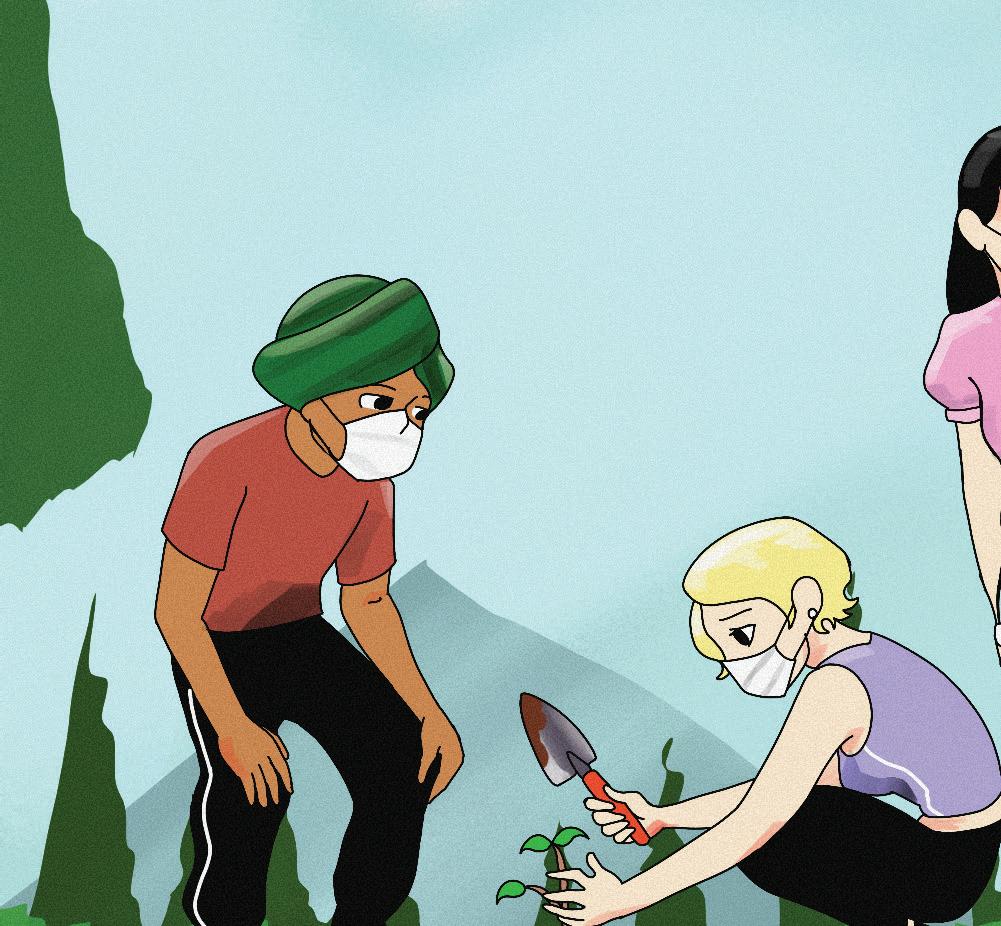
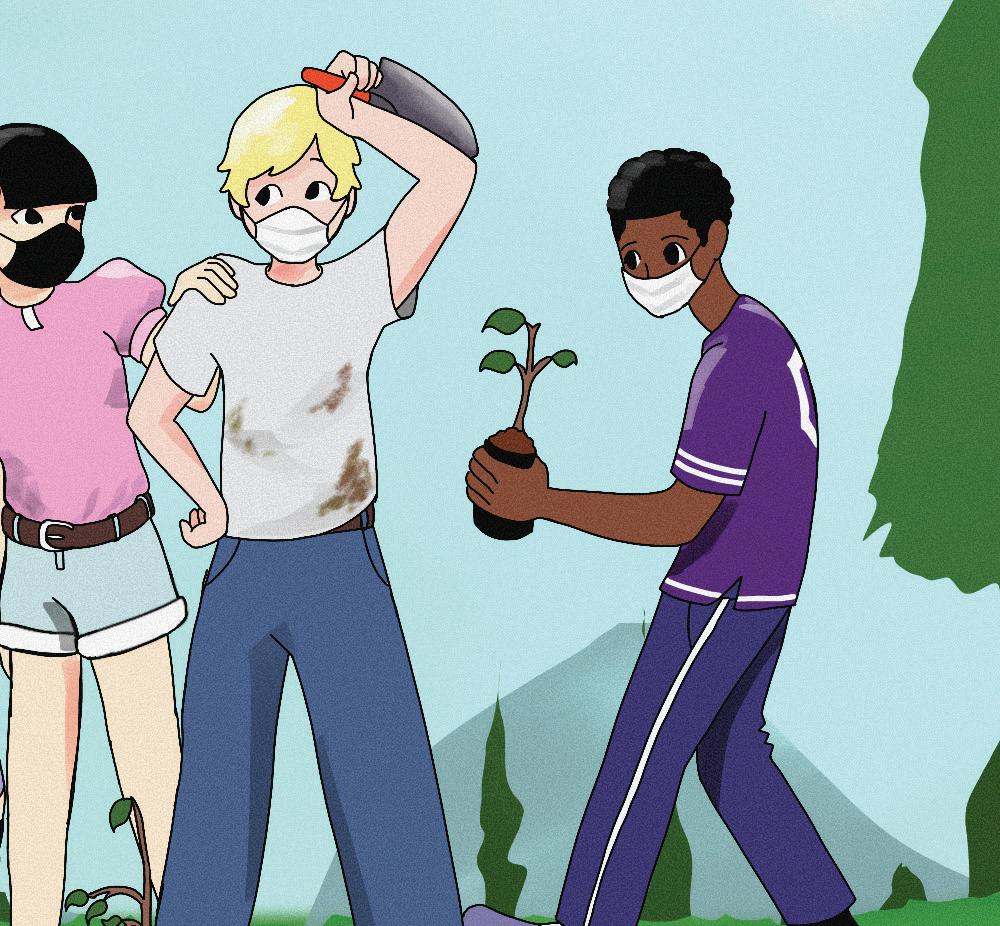
Content warning: brief mention of genocide and forced labour.
I spend a lot of time in the “Am I the asshole” subreddit, and while I never leave any comments, I always think about my own verdict. One thing that comes to mind while reading posts is that this isn’t the “Am I in the legal right” subreddit — it’s the “Am I the asshole” subreddit. Those are two completely di erent things. Just because you can do something doesn’t mean it’s not rude, inconsiderate, or sel sh. This online community of over 17 million people crowdsources ideas surrounding morality and ethics in our interpersonal relationships. Often, the discussions that emerge serve as a good reminder of the importance of foregrounding an ethic of care in our everyday lives.
A year and a half ago, I wrote about what we can learn about care from radical disability justice activists. I touched on community care and how getting vaccinated and wearing a mask are examples of this. In a lot of ways, I’m arguing for something similar here. I’m saying our everyday actions are how we live out our politics. Do your daily choices re ect the fact that you care? Wait, do you even care?
Recently, I re-read Everyday Decolonization: Living a Decolonizing Queer Politics by Sarah Hunt and Cindy Holmes. They draw on stories from their own lives to explore what allyship and decolonization look like in their “partnerships, families, and friendships.” It serves as a great reminder that social justice isn’t this big abstract thing you can only participate in if your name is Bisan or Greta. It’s part of your everyday life. You make choices every single day that re ect your politics. Don’t let anyone convince you that you don’t have agency or that your actions don’t matter.
We need to bring back accountability and nuance in conversations about how we as individuals are complicit in injustice. The fact that “there is no ethical consumption under capitalism” does not mean you should be upgrading your phone every year. Apple unethically sources materials from forced labour in Congo, and frequent upgrades are also environmentally detrimental. The fact that Taylor Swift’s private jet’s 2022 carbon emissions equate to “1,800 times the average human’s annual emissions” does not mean you shouldn’t compost or recycle.
It’s easy to point ngers at people who are harming the planet more than you. It’s easy to point ngers at people who are more bigoted than you. It’s easy to blame capitalism, the patriarchy, and white supremacy. And don’t get me wrong, calling out violence and injustice and understanding systems of power is incredibly important. But have we resorted to doing that so we can avoid looking at ourselves? Have we chosen to do that instead of actively working toward change, liberation, and justice?
This matters because we can’t build resilient and sustainable communities if our actions do not align with that goal. If we’re four years into the pandemic and you’re not willing to
wear a mask because you’re “over it,” what are you willing to sacri ce to save lives? Anti-trans legislation is being pushed across Turtle Island, but you’re not willing to confront your boyfriend who just made a transphobic joke because that would be uncomfortable? Then how strong is your allyship? You understand that there is a humanitarian crisis in Palestine, but the only thing you want to post about is how you don’t think it should’ve been brought up at your convocation? Maybe the gruesome images from this genocide don’t move you enough.
You make choices every single day that reflect your politics. Don’t let anyone convince you that you don’t have agency or that your actions don’t matter.
It doesn’t have to be like this. You can make changes like forfeiting the ability to showcase your lipstick on the bus by wearing a well- tted respirator so you aren’t part of why someone gets Long COVID. Or, you can skip ordering a 2:00 a.m. large fry from a corporation that supports the Israeli military. Individual decisions to boycott a genocide and support Palestine add up. Even sending $5 or $10 to a mutual aid campaign or taking advantage of the afternoon you have o to attend a rally makes a di erence. Sure, some of these things are more accessible than others. There are reasons why someone might need to shop from Amazon or use disposable cutlery, such as accessibility needs or limited a ordable options for essentials. But are you just bringing that up to distract from why you’re doing those things? That’s a question only you can answer.
De ection is an issue that is rampant in leftist or progressive spaces. I cannot even begin to count the number of folks who have started explaining the concept of food deserts or Indigenous hunting practices once they found out I was vegan. Those people have never lived in a food desert and are not Indigenous. Using other marginalized communities to justify your choices when their issues have nothing to do with your choices is problematic. Also, I didn’t even say you should be vegan — I said the steakhouse you’re suggesting for dinner doesn’t have any menu options for me.
Overall, this isn’t about pointing ngers and labelling people as good or bad. It’s about encouraging introspection — for myself, too. So please, leave the defensiveness at the door, you don’t need it here. When someone asks you to wear a mask, they are not accusing you of being a terrible person. They’re explaining to you a way that you can care for your community. Don’t worry about being perfect or getting it right the rst time. Just continue to be open to learning and growth. Please try because you care.

Before you say anything — I’m not talking about wrapping gifts in cheap plastic that creates land ll waste, as I swore o buying this kind of wrapping paper years ago. However, I don’t think sustainability should be an excuse to never wrap anything ever.
There are multiple ways to wrap gifts and decorate in an eco-friendly fashion: recyclable paper, dried owers, reusable ribbons. You can even delve into the Japanese art of furoshiki and use fabric! Part of giving and receiving gifts is the joy of opening something and being surprised by what’s inside. I’m not a huge gift person, but in a way, the wrapping is part of the gift itself. It shows you put time and e ort into wrapping your present (no matter how it turned out) just so the receiver can tear it open.
When I receive a gift in a dusty shipping box which tells me exactly where this is coming from, it dampens the surprise of opening it. To solely give me a trinket without its wrapping removes the suspense factor. That’s not to say I’m ungrateful, but with no wrapping I don’t have the time to try and act curious and excited! It’s just straight disappointment.

As the effects of climate change grow increasingly dangerous each year, the Canadian government introduced a federal carbon tax in 2018 to decrease emissions, with BC being the first to introduce this policy in 2008. Discussions about the tax’s efficacy have increased as the next federal election draws near. However, the cost is minimal in comparison to the benefits of reducing our collective carbon footprint, especially considering that the largest emitters are transportation and fossil fuel corporations.
The carbon tax is a percentage added to purchases that emit greenhouse gases, like gas for your car or natural gas heating for your house. Canada’s current carbon tax is $80 per tonne of carbon emissions. It’s intended to increase by $15 yearly until 2030. The up-front cost of emitting excess carbon is meant to incentivize a gradual move toward clean energy for producers and consumers.
The consequences of climate change can end up costing much more in the long run than a few cents per litre of gas. If there are little to no changes to emissions and climate policies, the effects could cost Canada up to $5.5 trillion by the end of the 21 st century. The carbon tax produces significant results. In a study of countries that have adopted the carbon tax, they found it decreased emissions by 15%.
Current debates about the carbon tax have gone beyond disagreement with the cost itself. The Conservative Party of Canada claims carbon tax regulations are greatly impacting
the national cost of living — including rising grocery prices. While gas prices are rising along with the general cost of living across the country, the carbon tax itself is not the cause of economic strife. It may be an inconvenience for the average person, but reducing emissions will ultimately benefit everyone.
The same cannot be said for the extreme pricegouging seen in the housing market, grocery costs, and telecommunications monopolies. Eliminating the carbon tax won’t address the country’s widespread affordability crisis — campaigns revolving around this rhetoric are a distraction. The fixation on the carbon tax neglects policies that could benefit Canadians more, rather than just corporate interests.
Currently, I drive a car with a 40 litre gas tank. If I fill that up from empty, I pay around $7 in carbon tax from that one stop. I know my experience isn’t the same as everyone else in Canada. Ford F-150 models in the 2020s vary from 23 gallon (87 litre) gas tanks to 36 gallon (136 litre) tanks, depending on the specifications chosen. On the lower end, that’s $15.32 per fill-up from empty in BC. On the higher end, it’s $23.95 per fill-up from empty. While that number isn’t negligible, gas prices are surging due to corporate price-gouging and supply chain issues, not the carbon tax alone. Canada’s affordability crisis is really what we should be paying attention to, and addressing it would make the carbon tax feel much more manageable.
The carbon tax also impacts major emitters more than the average consumer, as individuals and small businesses bene t from tax credits. In BC, the provincial government has its own automatic climate action tax credit to help residents o set the carbon tax cost, with a similar rebate available to small business owners. According to the Government of Canada, around 90% of carbon tax proceeds “go right back to individuals.” The tax has more implications for corporate entities, and rightfully so — those leading in emissions rates should be expected to lead the transition to clean energy.
While the carbon tax is a good step toward sustainability, that’s not to say there isn’t still work to be done to limit emissions across the country. The federal government has recently announced an emissions cap for the oil and gas industry, limiting how much pollutants corporations are allowed to produce. This is another step toward holding major emitters accountable.
It’s understandable to view another tax as a bad thing, though it truly is in our best interests. While it’s important to address the rising cost of living in this country, the carbon tax is not a major culprit. Protecting the climate and reducing emissions can also help prevent further hardships for those living in Canada. Compared to major contributors to the current cost of living, the carbon tax is not a heavy burden on our wallets. Concerns about it are nothing more than a distraction from taking genuine action against the affordability crisis.







ANONYMOUS · SFU STUDENT


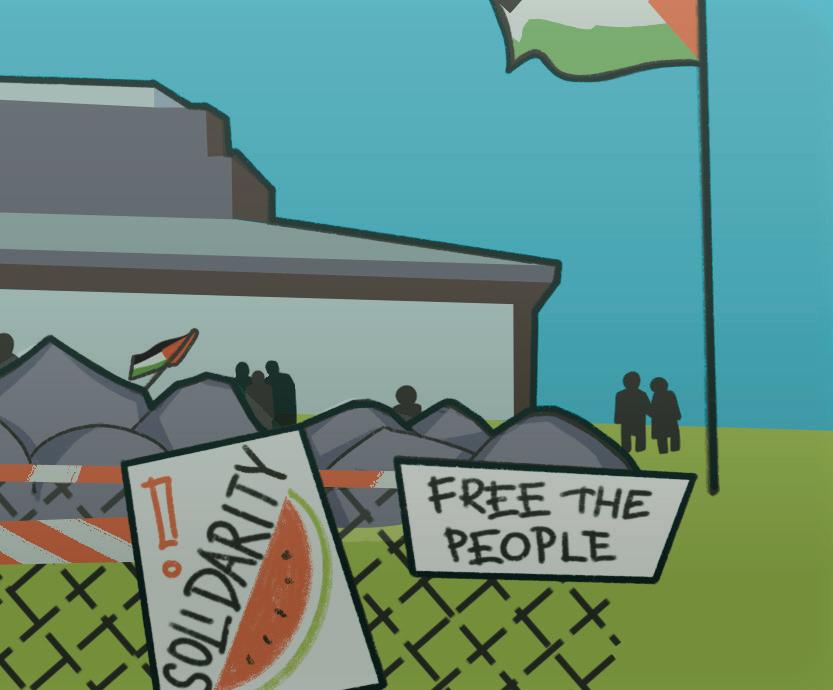



Rocky Point Spirits is probably not a hidden gem for those located in the Tri-Cities, but it’s a must-try regardless of where you live in the Lower Mainland. For those looking to enjoy the brewery vibe without drinking a beer, Rocky Point Spirits is your place. Sip on a classic cosmopolitan or try their passionfruit vodka tea, all while watching the sun set from their patio overlooking Rocky Point. It’s not only a staple on Port Moody’s Brewery Row, but also a great place to grab drinks at the end of a sunny summer’s day.
The Wise Hall is an intimate concert hall that hosts various forms of live entertainment. It’s a great local spot that features musicians from Vancouver and beyond. If you’re looking for a more relaxing experience, they also have a basement lounge where you can enjoy a cool drink. This hall, however, isn’t just for live music and entertainment — you can book their venue for virtually any event. They recently hosted a fundraising concert series featuring Vancouverbased artists such as Queer as Funk and Spendo. Help save a local gem by stopping by The Wise! Take a look at who they’re hosting next on do604.com.
Overlooking staləw (Fraser River) is the Gillnetter Pub, a neighbourhood joint for those located in the South Port Coquitlam area. With a spacious outdoor dining area and walls plastered with decorative nets and anchors, this pub truly commits to their nautical theme. They have a special deal every day of the week for guests to consider. On Thursdays, they have wings priced at $0.50 each from 3:00 p.m. to closing. Come for their happy hour, stay for the sunset on the river!
For a cozy, non-chaotic night out, try visiting Finch & Barley. During the daytime, this restaurant operates as a casual, MiddleEastern-inspired eatery serving up halloumi tacos and lamb gravy poutine. However, at night, Finch & Barley becomes a quaint and upbeat hub for rotating DJs and live, local talent. Low-tone splashes of red decorate their dining space late at night as they serve up tangy rose lemon drop martinis and fizzy lavender gin sodas. Check out their events tab for more information on their upcoming performers.
How to spend a night at . . .
When the monotonous heat and light of day subside into a warm summer night, where do the people go? One fond memory I have of last summer was spending my Friday nights in North Vancouver’s Lonsdale, immersing myself in The Shipyards Night Market. Coming back this year, it seemed like everyone had the same idea, because it was as bustling as ever!
Walking into the outdoor space, you’re immediately greeted with the smell of fresh kettle corn and a gentle breeze that pecks your face with crisp sea air. Music surrounds you, whether it’s avidly booming from the main stage in the center, or from the food trucks while you wait in line. Speaking of which, let’s delve into the different delicacies they offered, shall we?
The market has quite a few food trucks to choose from. My friend and I started our culinary journey at Midnight Joe’s, where we got Lil Joe’s, consisting of two sliders and chips, which were perfect for sharing. Next, the sight of tacos from the Tex-Mex food truck Dos Amigos caught our attention, so we ordered three chicken tacos which were incredibly juicy and had the perfect kick of spice. Feeling parched, we embarked on a scavenger hunt for an ice-cold drink, finally finding a lemon-shaped stand that belonged to Lemon Heaven. After refreshing ourselves, we decided to end our savoury escapades with a classic dog from Street Dogs. All the while, songs performed by blues and rock stunner HB Wild were coming from the center stage, providing a groovy soundtrack for our exploration! (P.S. they have different performers every Friday!)
When it comes to vendors and stalls, you can find almost anything your heart desires: artisanal candles, handmade knick-knacks of all sorts, or even a delicious duck chili oil! They also host the Granville Flea Market, a pop-up vintage and thrifted clothing store. The whole place is chock-filled with rows of all kinds of stuff that is definitely worth checking out.
One of the most interesting parts was walking through the local pop-up market presented by Made in the 604, which hosts over 50 small business vendors. Inside, we came across stalls like Connie’s Cravings and Cookies by John, both of which offer a variety of baked goods to quell a sweet tooth. Some retail vendors that caught my attention were Luna & Venus and Butterflies in Ballgowns who both offer high-quality, handmade, sustainable fashion pieces. I also found Bahoo Ceramic School and Lethal Lites Candles, each home to the most adorable selection of ceramic pieces and hand-poured soy candles, respectively. If I could, I would get a bit of everything!
A small bag of caramel kettle corn from Gary’s Kettle Corn to finish off the now cool summer evening was all that we needed. Sitting on the dock of the quay and admiring the people, the water, and the sounds of music playing softly far away, I couldn’t have asked for a better way to spend a Friday night! All of these establishments were open until late — around 10:00 p.m. — so there was plenty of time to enjoy. If you’re like me, looking for amusing places to go during the summer that won’t break the bank, The Shipyards Night Market is the place for you!

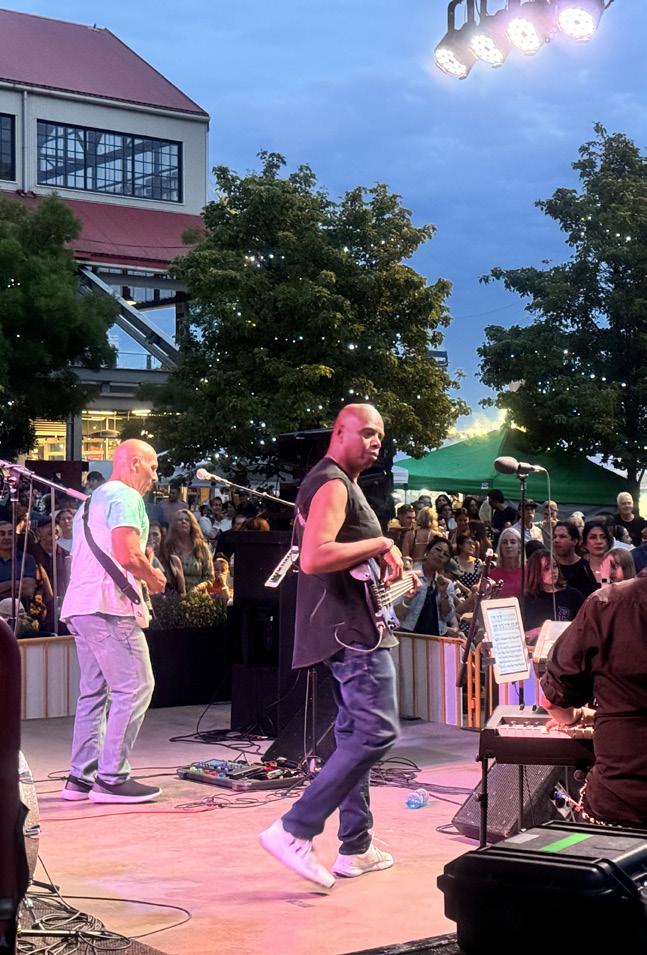
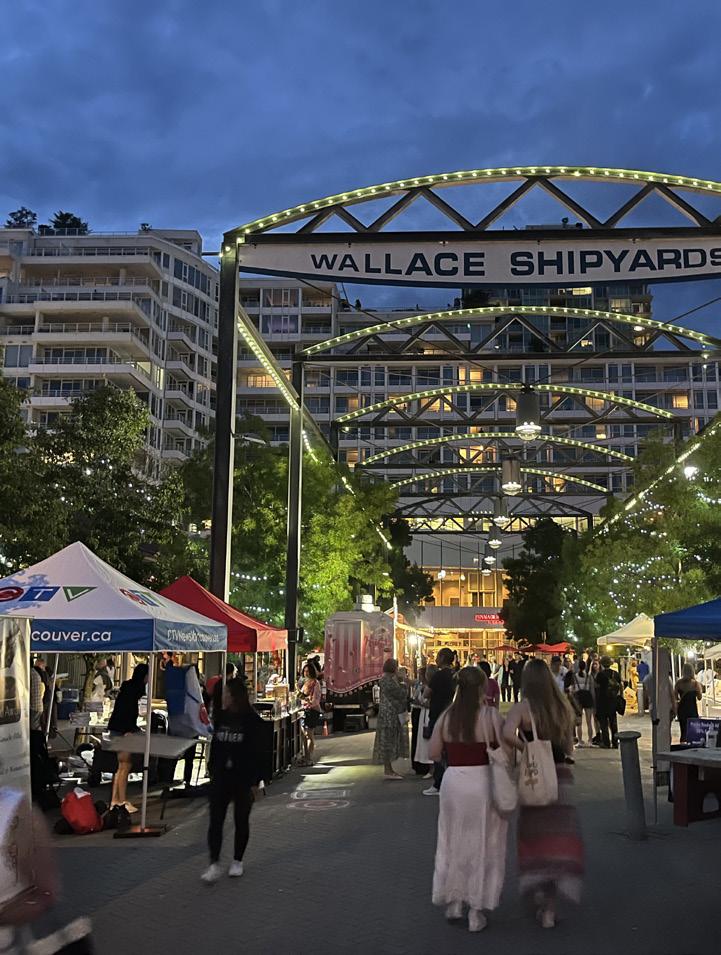
Izzy Cheung · Arts & Culture Editor

For National Indigenous Peoples’ Day on June 21, SFU Dining Commons put the spotlight on “Rooted.” This menu, which is available in rotation all year long, puts out delicious, Indigenousinspired dishes created by Teetl’it Gwich’in chef Steph Baryluk. Following its debut last year, the program has continued to release mouthwatering renditions of pasta, tacos, and desserts, seven of which I had the pleasure of trying. Here’s a tour of these dishes rooted in Indigenous ingredients and inspiration.
Duck taco with charred corn salsa
The dats’an (Teetl’it Gwich’in word for duck) tacos were the perfect mix of creamy, salty, and crisp. Small pieces of crusted duck with a salty umami flavour were placed on top of small beds of crunchy lettuce. A light layer of spicy mayo on top gave these little delicacies an added element of creaminess that completed the meal.
Three sisters soup
“The story of the three sisters (corn, squash, beans) is one of helping each other and protecting each other during growth,” chef Baryluk said in a statement. These three sisters refer to three plants that grow together when planted side by side. This dish, combining a medley of hearty vegetables, had a slight spice to the broth that would be perfect to indulge in during the snowy winter.
Habanero candied salmon salad
Salmon is important to Indigenous cultures as it is said to “give you positive energy and strength when consumed.” This candied salmon certainly fulfilled that promise, as it was by far the star of this dish. Sitting atop a bed of lively greens, the tuk (Teetl’it Gwich’in term for fish) was the perfect balance of salty and sweet. There was a tinge of spice to the sauce that hovered, not wanting to strike the taste buds right away. However, when it did hit, it wasn’t overpowering at all.
Bison dhandaii nilii pasta and juniper berry rubbed chicken with blackberry BBQ sauce
The Teetl’it Gwich’in phrase “dhandaii” is “tastes good” and “nilii” means “meat.” After having a bite of this dish, I definitely agree with its name. The bison meat gave the sauce a needed level of depth that reminded me of Italian bolognese with a slightly meatier flavour. On the same plate, I grabbed a piece of the tsiivii ch’ok (Teetl’it Gwich’in word for juniper berry) rubbed chicken, which had a surface-level sweetness to it that enhanced the flavour of the chicken itself.
Bannock taco
Tuhch’uh, which is the Teetl’it Gwich’in word for bannock, is a versatile staple that can take any taste profile that you’d like it to depending on what you top it with. A doughy, bread-like item, bannock is part of many Indigenous cuisines around Turtle Island. “Rooted” debuted their bannock taco on June 21 — it was stuffed with a light succotash and topped with hot sauce from Indigenous brand Sriracha Revolver. The fluffy bannock was the perfect base for the fresh, slightly spiced, and nutty taste profile delivered by this dish.
Smoked juniper cherry jam cheesecake mousse
This delicious dish was the perfect dessert to end off a spread of sumptuous goods. With a rich, panna cotta-like cream and tangy cherry jam from Tradish, this dessert was the perfect mix of sweet and slightly sour. Juniper berries have long been used “for ceremonial, medicinal, and culinary purposes” by Indigenous Peoples. While this tangy-yet-creamy dish tastes delicious, the ingredients used in this jam also help with “chest congestion, sore throat, cough, and mucus build up” — talk about a healthy dessert!
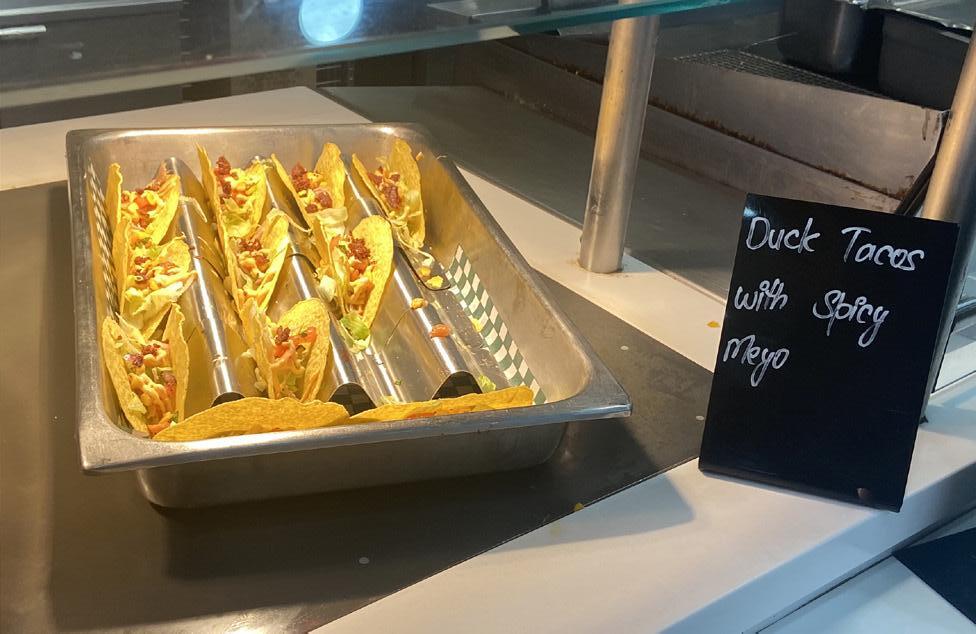
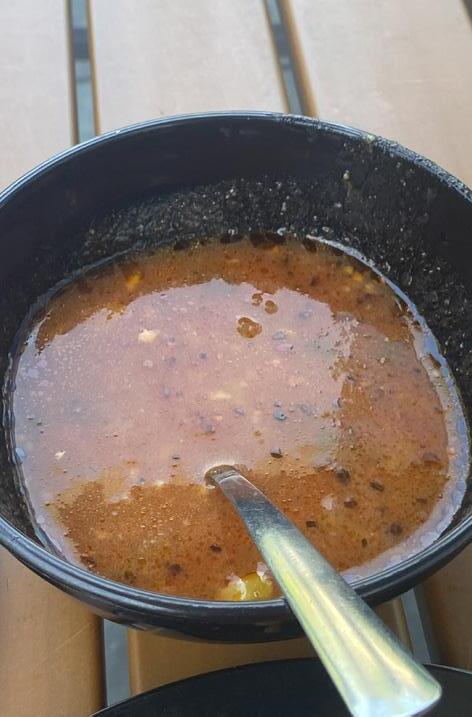
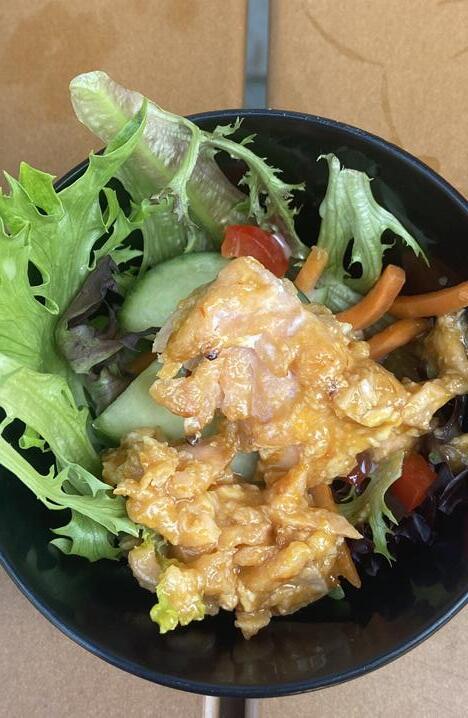

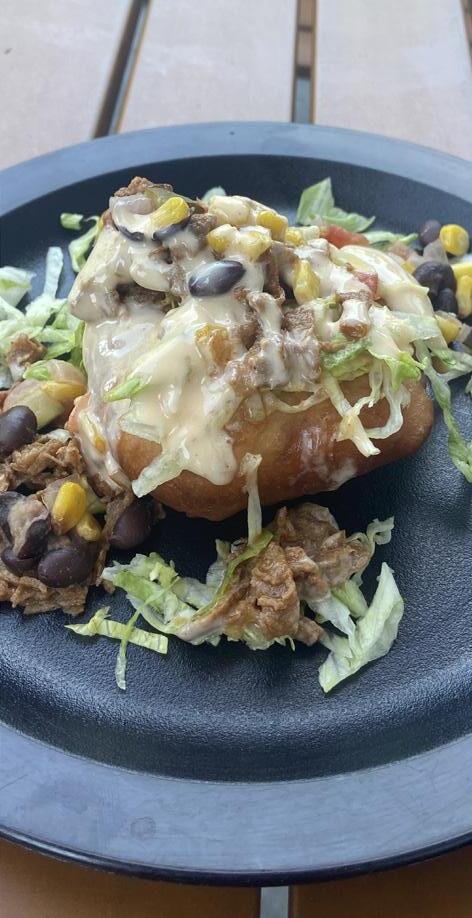
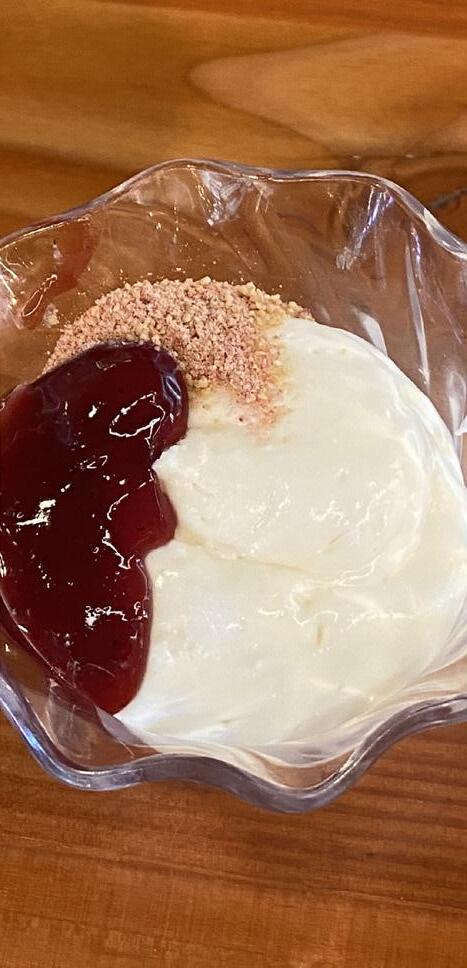
Yasmin Hassan · Staff Writer
After a long day of classes, I roam around downtown, looking for a place to sit and do some work. I’m walking with my AirPods in, canvas bag at my side, hurriedly searching for a welcoming café. I keep passing gentrified urban coffee shops with pale ceilings, cement floors, eco-friendly wood veneer, and glaring neon signs with obscure ‘90s movie references. Finally, I see my beacon of hope, the one that’s just right.
Looking over the menu, I waver between options but finally decide. The barista is friendly, making small talk about the rush that had just finished. Sitting down, I make myself comfortable and sprawl out all my supplies, my laptop primed and ready for a furious writing session. I’m feeling . . . studious. Before I begin, I notice my Wi-Fi’s not connected. Ah, easy fix; this is a café. Surely, they have free guest Wi-Fi. Oh, it has a password, I think as I fixate my gaze on that vexatious little padlock that sits on the Wi-Fi symbol.
My eyes wander as I look up at the walls of my surroundings, trying to see if there’s some sort of plaque or sign with the password. I inspect the tabletop for a note, and after seeing nothing on the long wooden counter, I inspect the bottom (just to make sure). I find chewed gum and stark disappointment. I see a sign taped down at the end of the counter, and I scoot over to find the password. Instead, I’m met with a chunky QR code that reads “scan for Wi-Fi,” so I whip out my phone and do just that. The site buffers and buffers and I can’t look away, like watching a toddler fall face first into sand. I snap out of my trance when the server collapses in on itself deciding I am not good enough for the Wi-Fi. Splendid! Just as I frantically searched for the café itself, I now seek its deepest darkest secret, which is apparently the Wi-Fi password. I dare not move from my seat as I cannot handle that sort of embarrassment — I just
sat down and layed out my possessions! So, instead I try the age old guessing game.

I start wondering, is it their phone number? Maybe I’ll try that. Their email? Address number? Postal code? Is it the nice barista’s social security number? WHY DO I HAVE TO TRAVEL THE SEVEN SEAS, COMPLETE A MAPPED QUEST, AND UNCOVER AN ANCIENT SACRED TEXT TO GET THIS GUEST WI-FI? To outsiders, I’m just admiring the floating planters that hang on the walls, but on the inside, I feel akin to an overly anxious detective. I’m deciphering the configuration of the rustic brick statement wall to see if there might be some sort of clue there. Perhaps it’s only accessible through Morse code. Yes! Maybe each time the espresso machine froths milk or signals a poured espresso, it corresponds to dots and dashes! That’s gotta be it.
Unfortunately, I don’t have access to a Morse code translator. Is it time to swallow my pride along with my latte? I accept my defeat as a bead of sweat rolls down my forehead in the airconditioned café, and I walk up to the barista.
“Sorry to bug you, would you mind telling me the password to your Wi-Fi?”
“No problem, it’s ‘CoffeeLovers2012’!”
“Thanks so much.”
Alas, I have Wi-Fi, but at what cost? My dignity? My strife? All for naught, I fear. Never has the sweetest iced vanilla oat latte tasted so bitter.
Sitting in the dark because these motion sensor lights are pissing me off
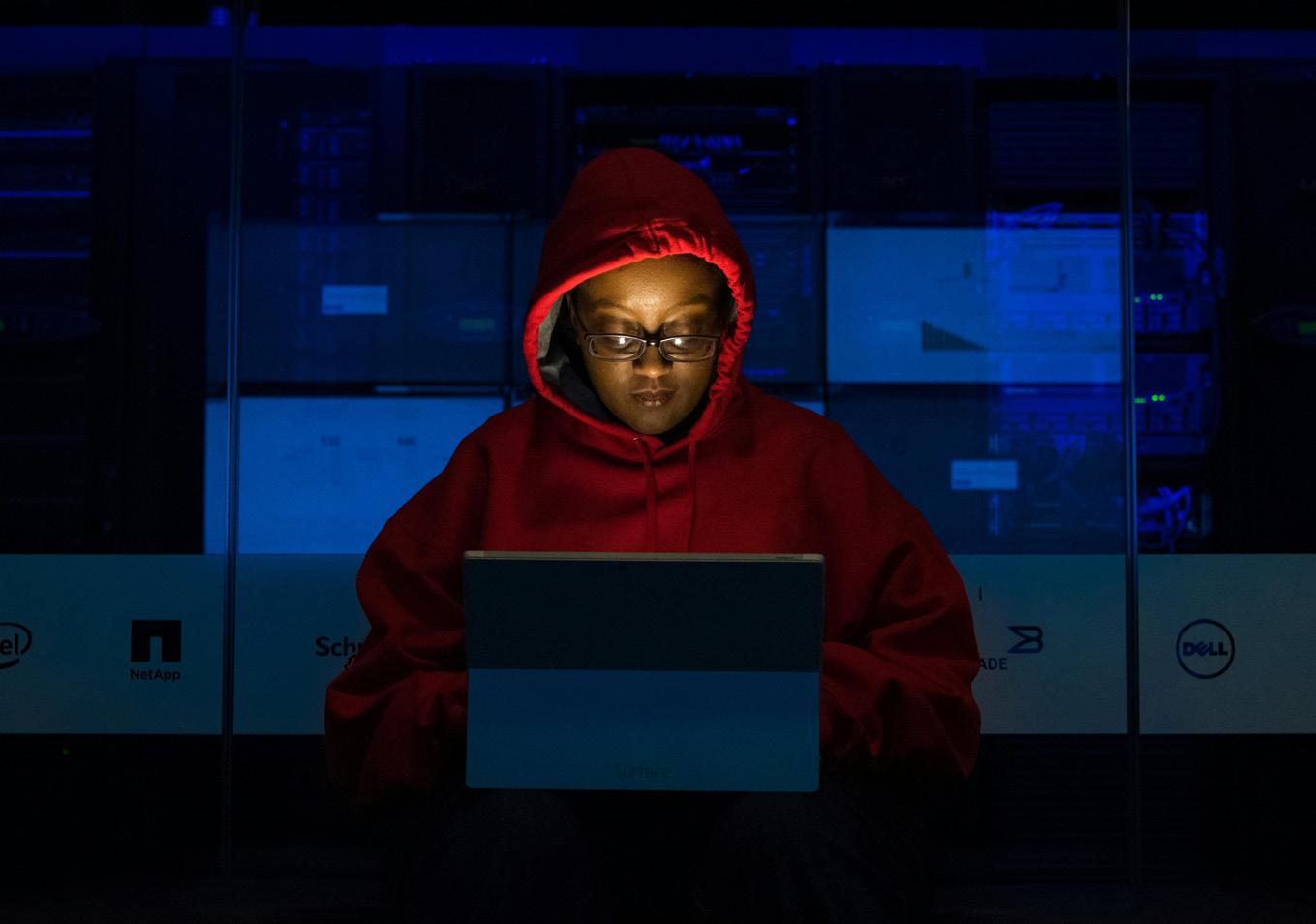
This year marks the fourth time SFU ranks number one in so-called Canada for innovation, and if this is what innovation looks like, I don’t want it. God invented light switches for a reason. That reason is so I don’t have to start waving my arms like a Titanic survivor stranded at sea when I am suddenly plunged into complete darkness in the School of Communication Lab.
The lights aren’t broke; I am. So, stop taking my tuition to fund these motion-activated lights that don’t even detect my motion unless I do the Macarena three times, followed by the Cha Cha Slide. You’re not an Apple watch; you can’t get me to stand on command (yes, this joke only works if we suspend our disbelief for a second and pretend we actually stand up when our watches scream at us).
Sorry, the grammar police entered the chat, so let me try that again. The lights aren’t broken; the doors to most bathroom stalls in the AQ are. Years of playing Twister still haven’t prepared me for the challenge of doing my business while holding the door. Also, I’m 5’2 and can barely reach. Stop investing in the lights and start investing in the locks.
You know what? I don’t even need light! Most of these Harbour Centre rooms don’t even have windows, and it’s OK. Humanity survived the “Dark Ages” before, and I will survive them again. I will sit in the dark like the monster hiding under your bed.
ALSO (that’s right, I’m not done), real innovation would be SFU fixing the alarm in the Lab. You have to punch in a code to get inside, yet the alarm still goes off when you open the door. It doesn’t make any sense. I will not be treated like a trespasser in my own home. Once, it rang for so long, I became one with the shrill noise. I synced my heartbeat to it and everything. It was an experience.
If this is all part of a social experiment to see how much students will tolerate before they transfer to another university, then challenge accepted. I keep getting those Loop earplug ads anyway, and I’ve been meaning to work on my night vision. Alternatively, SFU can get its rear in gear and fix this mess. Then, maybe next year, it will be included in the “list of universities people actually want to attend.”
July 2–7
I am judging you based on your manga collection

Aries March 21–April 19
Isekai this, isekai that. Everything you own is isekai because you deeply relate to boring protagonists with no personality, and use manga for wish fulfilment. I promise if you were thrown into another world, you would die instantly and five beautiful women would not fall in love with you.

Cancer June 21–July 22
You are the devil, and Gemini’s worst enemy. You have a giant and basic collection of shounen that you accumulated in one month. You haven’t read any of it, and it is all the same as everyone else: Naruto, Attack on Titan, Spy x Family, and Chainsaw Man. You ask people to “give you recommendations” based on your collection, but you have no taste. You have no idea what demographics are, and think they are genres (not all shoujo is romance, and you probably hate women!).

Libra September 23–October 22
You are a mess. You have been collecting for years, and still have no shelves. There are like 300 volumes in your office, and somehow you’ve managed to stack them all on top of each other. You are either oblivious to the fact that this could damage the spines, or you don’t care. Clearly, you haven’t read anything in years because who would when they are stored like that?

Capricorn
December 22–January 19
You are god because you have the full English set of Mushishi. You also probably found it at a random, rural bookstore for a ridiculously low price. Now the whole manga community hates you because the rest of us will probably never run into a seller who doesn’t know the value of what they’re selling.

Taurus April 20–May 20
Not to sound like every person who has ever seen your collection, but keeping all your manga bagged does not entirely prevent yellowing. You are committed to making your shelves look like a store, and every time you pick up anything, it is loud and crinkly. Don’t worry; I support your decision to store your manga however you want! However, I do have a tip: try sleeves.

Leo July 23–August 22
Leo, bless your soul. You’re a newbie collector and everything confuses you. You don’t understand demographics either and you are overly paranoid about “fakes,” despite only purchasing from licensed distributors. No, your One Piece isn’t fake — it’s just poor quality control.

October 23–November 21
Ah, Scorpio. Did you think I was going to compliment you for your “non-basic” taste? Wrong. You’re not much better than Cancer — seinen is your bread and butter. You are pretentious as hell and love almost anything by Inio Asano, but refuse to expand your taste outside of “philosophical” manga. Also, you most definitely have a figurine collection of Rei Ayanami.

January 20–February 18
I thought Sagittarius was bad, but you are so much worse with your little anime girl figurines. They are blocking the view of your entire shelf, and I can’t see anything. I don’t even know how you dust them without knocking everything over. All of your figure collection is just Homura Akemi. Call me when you need to sell everything because you are desperate for money.

Gemini May 21–June 20
You love that sweet, sweet shoujo (with a splash of josei). You are dedicated. You have the Tokyopop version and Collector’s edition of Fruits Basket, the full set of Nana, Kimi ni Todoke, and the bilingual and Japanese volumes of Chihayafuru. Friendship and romance are your favourite things to read about because they fulfill the unmet emotional needs in your reality. Also, you are sick of no one realizing Skip to Loafer is a seinen.

Virgo August 23–September 22
You are a dedicated yuri fan. You buy Japanese volumes before they are even licensed in English, and will violently defend Bloom Into You and The Guy She Was Interested In Wasn’t a Guy at All to anyone who critiques them. This is probably because you cannot work up the courage to ask out a girl yourself! I admire how you proudly flaunt your love for Citrus (despite it being trash), but I highly recommend you read something by Milk Morinaga.

November 22–December 21
Sagittarius, you are actually so cute. You have a very balanced and mixed manga collection, and your shelf is filled with miscellaneous plushies and figurines. I don’t know how you read anything with so many things blocking your manga, but I do know you could write an essay on queer representation in Sailor Moon — I see your HaruMichi shrine on the top shelf.

February 19–March 20
You are still deeply and emotionally connected to the manga from your teen years. You have the full set of Haikyuu!! and reading it always makes you cry. You were also obsessed with Free! when it aired in 2013 (of course you were; it’s a swimming anime), and naturally collected the light novel it was based on. This also makes you cry.




